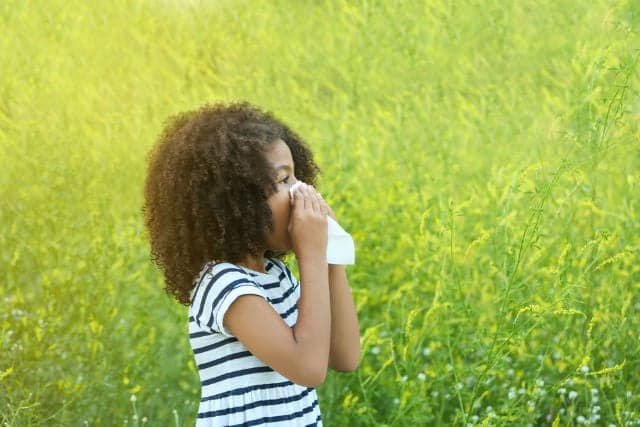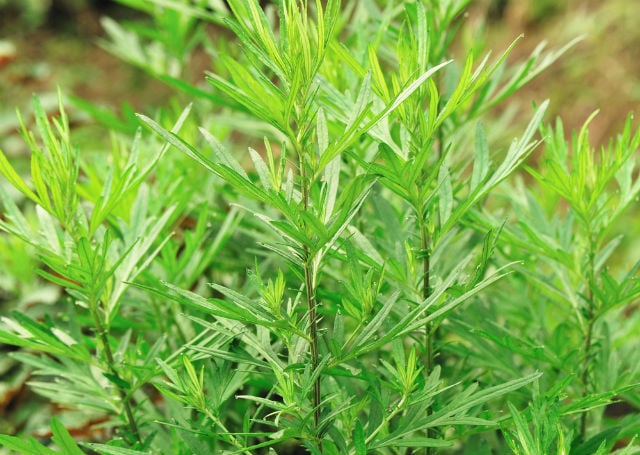Sweden’s most common seasonal allergies (and how to avoid them)
Itchy eyes? Check. Runny nose? Check. Uncontrollable sneezing? You get the gist. These symptoms could be mistaken for a common cold, but if you can’t seem to shake them then it might be time for an allergy test.

Fun fact: Sweden has its own combination of allergens that might not have bothered you before you moved here.
So what should you do if all of a sudden you can’t stifle a sneeze and have a nose running faster than Usain Bolt?
While it may be tempting to nip to your nearest pharmacy to stockpile antihistamines, the best thing you can do is see a doctor first.
“It’s always best to get an allergy confirmed which you can do with a simple blood test,” says Dr. Johan Flodin, Chief Medical Officer at Swedish healthcare app KRY.
He explains that when you know exactly what you’re allergic to, your symptoms can be treated more effectively. For example, you might be able to get different medication that isn’t available over the counter and that has fewer side effects.
And from consultation to blood test and prescription, the whole process can be done quickly and easily through KRY. That includes a face-to-face appointment with a doctor via video call as well as getting your prescription, and even repeat prescriptions, digitally delivered through the app.
Get your prescriptions renewed through KRY. Click here to download the app.
But what are some of the most common seasonal allergies in Sweden? And at what time of year might you start to notice the symptoms?
“The allergy season in Sweden starts as soon as the snow melts,” says Dr. Flodin.
Hazel trees can cause big problems for allergy sufferers in Sweden. Photo: Creative Commons
It’s a common misconception, he adds, that although it still feels like winter there isn’t the risk of airborne allergies. Despite the chill in the air, hazel trees begin sprouting leaves in March and that’s when the first allergy symptoms rear their itchy head.
The hazel, a deciduous tree native to the more temperate climate in the northern hemisphere, is common here in Sweden but not found in warmer climes.
“Hazel pollen causes quite big problems for some of our patients,” says Dr. Flodin. “It’s all the traditional symptoms like itchy eyes, a runny nose, and so forth.”
Don’t be lulled into a false sense of security if you’re symptom-free even when surrounded by hazel trees. Leafy green Sweden has another trick up her sleeve in the springtime.
 Birch trees are very common in Sweden. Photo: frenta/Depositphotos
Birch trees are very common in Sweden. Photo: frenta/Depositphotos
In late March to early April, the birch tree begins to bloom and it’s this harmless looking tree that causes the most problems for allergy sufferers in Sweden.
“It’s quite common to be allergic to birch pollen and there are so many birch trees in Sweden,” says Dr. Flodin.
The allergy can be so severe that it’s more-or-less impossible for some people to be outside without treatment. Symptoms include an itchy, runny nose, frequent sneezing and red, watery eyes.
It’s useful to know that if you’re allergic to birch, you may also find you have some food allergies too. Specifically to pome fruits like apples and pears.
Dr. Flodin explains this is because the molecules mimic each other and cause a cross-reaction, so your body thinks you’re eating birch when in fact you’re eating an apple.
Feeling itchy? Download KRY and speak to a doctor in English
Don’t let your guard down when the seasons change. Different types of grass and plants grow throughout Swedish summertime, each able to reap its own kind of mayhem on allergy sufferers.
 Mugwort is a type of plant that grows in Sweden during late summer. Photo: lzf/Depositphotos
Mugwort is a type of plant that grows in Sweden during late summer. Photo: lzf/Depositphotos
“Not all patients are allergic to all grass or plant types. Here in Sweden, a type of plant called mugwort (gråbo in Swedish) is quite common in late summer, and some patients can have a severe reaction to it,” says Dr. Flodin.
The good news is, once you’ve taken a blood test and know exactly what you're allergic to, you can try to avoid the trigger. Of course, it’s not always possible, but with the right medication and precautions, your reaction can be significantly lessened.
Dr. Flodin recommends checking the daily weather report which also displays the pollen count.
“If you’re allergic to birch pollen and see there’s a high level of it in the air, then you can double your allergy meds,” he explains.
While hay fever is very common during spring and summer in Sweden, that doesn’t mean it’s the definitive cause of your allergy symptoms. If you find yourself sniffling and scratching all year round, the culprit could be something more insidious.
“Dust mites are the forgotten allergy, and in Sweden at least they are pretty common,” says Dr. Flodin. “They prefer a moist, dark environment and we stay indoors during winter here, so they can grow in your bed.”
So what can be done to banish these invisible irritants? Dr. Flodin advises a rigorous spring clean to rid your home of dust mites.
“When the sun comes out, put your sheets through a hot wash, clean your house, and enjoy the nice weather!”
This article was produced by The Local Client Studio and sponsored by KRY.
This content was paid for by an advertiser and produced by The Local's Creative Studio.

Join the conversation in our comments section below. Share your own views and experience and if you have a question or suggestion for our journalists then email us at [email protected].
Please keep comments civil, constructive and on topic – and make sure to read our terms of use before getting involved.
Please log in here to leave a comment.